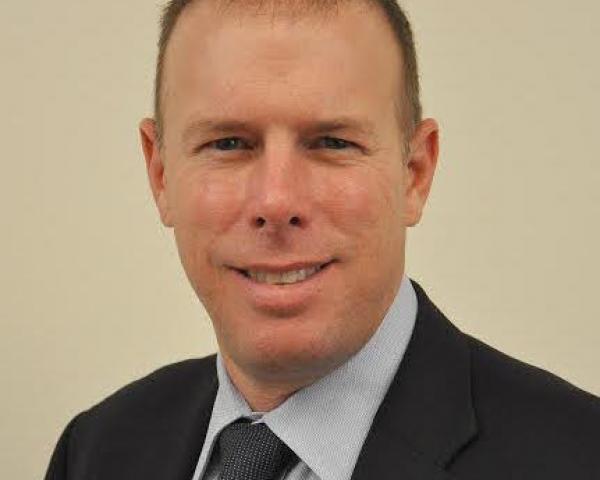At the end of 2016, some CEOs are going to be happy about their results. Others? Not so much. Underlying both the good and the bad will be a clear bifurcation between those that get and execute modern IT and those that don’t. The outcomes will be stark and the penalties brutal. This bifurcation will just be beginning, and the gap between the haves and have nots will continue to grow. This article will talk about what the bifurcation is, how it came about and how you can end up on the right side.
But first, here’s a snapshot of how your organization will behave if you’re a winner in 2016. You’ll be better at customer acquisition, retention and growth than your competition. You’ll be far faster and more effective at integrating and leveraging acquisitions and faster than your competition in introducing new products, services or features. Revenue-per-employee will be better than your peer group, and return on capital assets will be better than average for your market segment. You’ll have advantages in decision cycle time and decision quality as well as better talent management and broad collaboration enablers. Your BPM layer will have near-perfect compliance
and cost-efficiency. You’ll quickly respond to new entrants, ideas and attacks. And your marketing spend will be two times more effective per unit dollar than your nearest competitors.
This translates into segment-leading profit, share and growth numbers and the best shareholder return.
But seriously, how can you do all the above — and more — to put a serious hurt on your competitors?
Clearly, you must have the right strategic focus, the right goal alignment across the firm, the right talent matched to task and the right structure to mission. But even with that, it is simply impossible to achieve the above in today’s world without being excellent at IT and having the CEO/CIO be his or her own lock-step mini team. Those that don’t, won’t succeed. The big bifurcation is beginning.
What led to the current IT bifurcation?
In the early 2000s, after the Y2K fog cleared, smart, well-funded startups began to leapfrog current technology. Even some established big players made great leaps forward (often by acquisition). The foundations were set back then for things like Enterprise Architecture, SOA/Web Services, next-gen analytics, cloud(s), Business Process Management (BPM), virtualization, enterprise grade KM/collaboration platforms, modern portfolio management, analytics (think metadata) and agile development to really make a difference.
Around 2007 and 2008, a lot of the first-gen players were killed off by the second generation, which was born advantaged by having seen the stumbles of the first generation. At the same time, the size and value of networks increased, and the mobile layer began to take on critical mass, helping spawn the emerging big data field with its own thick fog. This spawned a hockey-stick growth curve for the massive and massively complex “social” layer, which, in turn, fuels more big-data plays.
It’s now 2016, and these areas (and more) have matured into extremely viable, high-impact opportunities for IT. On top of that, emerging areas like SDN, SDDC, DTM, TBM, algorithmic solutions, next-gen visualization, real IT asset management, social tools and new construction tools have created a split — the big bifurcation — in the IT world.
The firms that leverage a decent amount of the modern tech mentioned above and figure out how to do that while whittling away at legacy overhang are simply better armed for the competitive fight than their opponents. They are the ones at the knife fight with the gun. It shows up in concrete results. It generates the happy CEO or CIO I described above.
What are your odds of landing on the winning side of IT bifurcation?
Like golf, poker, raising a teenager, hiking to the South Pole and writing haiku, undertanding next-gen IT stuff is conceptually quite simple — but it’s wickedly hard to do really well. Like those examples, in IT, there will be a long wake of wreckage from ugly, failed attempts.
May the odds always be in your favor.
Unfortunately, they are not. Less than 10% of the Fortune 1000 IT teams will be on the winning side of this by the end of 2016.
The rewards for landing on the winning side will be great, as will the unprecedented churn in CIOs and CEOs. As results become apparent and, in part thanks to increased media buzz, the board-level understanding of the bifurcation becomes clear, heads will roll.
Taken as a whole, the changes I described above are new, drastic and high-impact. We are entering a new epoch, one that makes the advent of the two past big network changes in U.S. business (railroads and telegraph) look like child’s play. This is not an acceleration or concentration of an existing case. This is a new scenario.
Tips for how to land on the right side of IT bifurcation
So what are the prescriptions? Here are 10 to get you started.
1. The genius of “and” versus the tyranny of “or”
This IT game would be easy if the business, the market, the competition and the invention would all just pause for 18 months while we go tools-down, clean up the inevitable legacy quagmire and get all the new cool stuff. Of course, that’s not happening. It's hard to look at a bubble spend to enable judicious clean up, change and construction. Clean up the legacy mess, change the underlying IT factory to make it modern and construct using the new methods. For example, jump in at the deep end and do an existing funded program with BPM instead of whatever it was you were going to use.
Yes, you must spend to do this. But you must also eliminate cost structure. What you really want to do as you change and construct is reduce the cost structure. Cost structure is your factory cost of production — your unit cost of output. For example, in my experience, BPM applied well is three times faster, qualitatively superior and 30% cheaper right off the bat — a good cost-structure impact.
So, spend more and reduce the cost structure this year, and a couple of years out, your multiyear spend will have a favorable return (IRR for example). It’s about the genius of delivering
and shrinking the cost structure, not just delivering
or just reducing costs.
One small test is to see if you can identify the director in charge of targeting and shutting things down. I know you have many folks tasked with building and adding new things to your IT estate. Where’s this other person?
2. Get clarity of mission, and match talent to task and structure to mission
There is not a chance your current structure, talent map and set of guardrails (rewards/punishments aligned to mission) just happen to already match the new mission. You need to move fast and rip off that Band-Aid.
3. Be humble, get help
Find and engage external been-there-done-that help. Make sure knowledge transfer is a key focus and time-box these engagements.
Run away from any external "experts" who seek to be semi-permanently embedded in your world.
4. Get “journey talent”
Cricket players can play rugby; they can adapt to a new game. Get some journey talent and get rid of those who should not make the journey.
The existing team can generally be taught to play the new game — the one the new competitive landscape mandates regarding the bifurcation. Your existing team has very valuable knowledge and is a supporter of the positive parts of your culture, which is equally valuable (I hope).
IT is a special case, and the new cool stuff appeals to the IT masses. IT talent generally likes to learn, and its job content has more value when it works on “the new stuff.” It is, however, hugely important to get some journey talent, people who have been on that journey before, down in the trenches where the real work happens.
Some people just will not have the skills. For example, great command-and-control leaders often are not very effective in influencing organizations. Most of today's effective IT groups live in a partnering/influencing world.
More importantly, there will be people who verbally get on board but, in reality, are in the back of the boat not rowing, are rowing the other direction or are not in the boat at all. Get rid of these folks. Get rid of a few publicly.
5. The art of change
Almost no one wakes up and says, “Wow, I hope I see a bunch of change today.” Change is often hard and uncomfortable. The best balm is reward — reward for being in the boat and pulling your weight, for results and for progress.
The two things you have to worry about are making sure the entire team knows what change management model you use and keeping a close pulse on the organization to make sure you don’t add too much change. The latter is simply an art; there is no specific way to measure this. You have to feel it, you have to listen and you have to hear it. If you want to see an organization spin out-of-control and do weird stuff, overload them with change.
On the model side, there are, broadly speaking, only four change models. One of them works three times better than the others. Most companies cannot verbalize which one they use.
Once you believe in bifurcation and see the benefits on the other side of the fence, there is a huge gravitational pull to do too much too soon. It requires great leadership and pattern recognition to not do that. I wish I had an easier answer for you. Yep, again, IT is conceptually simple just wickedly hard to do.
6. Program Management
The only thing the top 7% of IT shops of any significant size have in common is that they are all great at program management. Can you name your PM guru(s) and top PM talent?
7. Architecture
Great ideation and construction skills — coupled with a lack of focus on architecture or a deficiency in that area — leads to spaghetti-esque disaster. It leads to more and more of your costs going to keeping the beast humming and less to delivering stuff that helps the P&L.
Great architecture coupled with just B+ construction leads to greatness.
Can you name your EA/Arch guru(s) and top architecture talent? You need a well-architected view of your destination if you are really going to land on the right side of bifurcation.
8. Finance
Make sure you serve the CFO team and partner where needed. It is not a peer relationship. In IT, you are their supplier. Having said that, it's a good idea to argue with them constructively — quite a bit, too. Get them plugged-in/embedded, get their help and support. Learn their language, learn to listen in their language. Implement a TBM solution. Get obsessed about moving spending out of the “keep the lights on” column and into the delivery column.
It’s a business. Sure, other measures are important, but we keep score in units of money.
9. But our culture won’t let us …
Culture — at a national, geographic or ethnographic level — is hard to change. Generally, it takes a good part of a generation (or more or forever) to change it. Culture inside a company is not the same thing; it's a simpler subset.
In a company, behaviors are a function of what employees get punished and rewarded for, and they are a function of how clearly those are communicated, executed and sold (yes, sold) to the employee base.
The sum of the behaviors is the culture at a company.
I would be surprised if your current culture is a perfect fit for the next few years. Think through this, execute the right changes and stick with it. The changes may not be drastic, but they are important.
10. The war for talent and cumulative IQ
Quite clearly, there is a war for talent, and it’s getting worse. Think of the talent needed for all the new stuff mentioned above to execute. There are three things you need to do.
- Launch an enterprise-wide KM/collaboration platform. I have done this at three G500 firms. The impact: Decision-quality goes up, decision-cycle time improves, resistance to innovation decreases and continual improvement efforts have a better chance of working. Un-innovation is the work all over your firm where people are working through a new problem/challenge or are implementing something for the first time, even though it’s been done before (sometimes many times) somewhere else in the company. So you don’t get bifurcated in a bad way, this will be key for the IT business journey you are heading on.
- Make HR strategic. One of the two Pareto root causes of failure for strategic change is the lack of appropriate and matched talent. Your strategy is really an optimizing play of the money, stuff (computers, buildings, IP, etc.), people and information you have. Your stuff and money are not as differentiated from your prime competitors as you think. The talent is the lynchpin. It is strategic. Get external help to help map this out well.
- Become more diverse. Where do all the white male IT superstars work? Pretty much wherever they want in the jobs they want. How hard is it to get that talent? It’s very hard. Many of them occupy their Peter Principle position and will never move. Where does the top minority and female talent work? A lot of them work in underutilized positions in IT sub-cultures inside companies where they are disenfranchised and subjugated to some degree.
If only you had an IT sub-culture where you were working on cool, new stuff, had a great compelling mission and had an environment where those talent segments were fully ensconced, appreciated and valued. The icing on that cake is that retention goes up. That impacts output per unit dollar and cost structure in good ways. The sprinkles on that icing is that the cumulative IQ is a sum of your IQ plus a kicker for the diversity of ideas. Think about it. One hundred smart guys who all think alike aren’t really that much smarter as a group than any one of them individually.
Visualize three new tech hires: Web developer, social media wizard and big data scientist. Were any of your visualizations 57-year-old balding white men? Probably not. One world-class tech guru I know personally, who is the best I have seen at driving Agile at scale, labors away in a high-pressure consulting firm. Why hasn’t anyone just grabbed him? I believe that is a segment with some hidden gems, too.
Conclusion – 80 extra IQ points
I hope all that helps. I hope you don’t end up on the wrong side of bifurcation. It’s just beginning, but it is coming fast.
Lastly, remember what Alan Kay said: “Context is worth 80 IQ points.” That means a lack of context subtracts IQ points. Lack of contextual understanding may be IT’s biggest problem, historically.
Buckle up, and step on the gas.
This article was previously published on SandHill.com. The story can be found here. Become a value player: Solve the business’ problems
Securing ‘buy-in’ from the business for a new approach to EPM is not easy; fatigue with new change programs is high and executives are competing fiercely for resources for their own programs. But buy-in is critical, not only at the executive level but throughout the business and across the enterprise.
In this busy environment, CFOs may want to start by helping the business answer one specific (yet critical) management question: “How can I best help you achieve your business goals?” Maybe it’s about finding the optimal pricing mix for their products and services. Maybe it’s about identifying the right acquisition targets to drive profitable growth. Or maybe it’s about identifying the most profitable customer segments and channels.
The key is in working collaboratively with the business to solve their problems and then using that opportunity and outcome to drive greater appetite for more advanced EPM capabilities within the business.
Bank CFOs leverage EPM to become more strategic
Most banking CFOs are already well on their way to moving from being a scorekeeper to becoming a business partner. But EPM enables CFOs in the banking sector to move one step further by allowing the finance function to combine multiple sets of data — financial, customer, risk and operational, for example — to provide the organization with deeper, more valuable and more strategic reports.
Our experience suggests that the ability to leverage and adopt new technology and approaches will be key. Some of the leading banking CFOs are already using data visualization and predictive analytics to collect, analyze and communicate key data sets. And early adopters are now investing into robo-advisors and other automated technologies that can reduce or eliminate manual intervention.
A business-led approach
When we work with banks and insurance CFOs to create stronger EPM lifecycle discipline and improve their EPM capabilities, we focus on creating a holistic enterprise performance management model and approach that recognizes the transformation
that is required in process, people and technology to allow CFOs to drive real value from their finance teams.
In doing so, we lead our clients through a business-led technology transformation that instills the necessary EPM awareness, capabilities and skills across the enterprise and throughout the business, helping CFOs meet the evolving and increasingly sophisticated demands of their organization.
Become a value player: Solve the business’ problems
Securing ‘buy-in’ from the business for a new approach to EPM is not easy; fatigue with new change programs is high and executives are competing fiercely for resources for their own programs. But buy-in is critical, not only at the executive level but throughout the business and across the enterprise.
In this busy environment, CFOs may want to start by helping the business answer one specific (yet critical) management question: “How can I best help you achieve your business goals?” Maybe it’s about finding the optimal pricing mix for their products and services. Maybe it’s about identifying the right acquisition targets to drive profitable growth. Or maybe it’s about identifying the most profitable customer segments and channels.
The key is in working collaboratively with the business to solve their problems and then using that opportunity and outcome to drive greater appetite for more advanced EPM capabilities within the business.
Bank CFOs leverage EPM to become more strategic
Most banking CFOs are already well on their way to moving from being a scorekeeper to becoming a business partner. But EPM enables CFOs in the banking sector to move one step further by allowing the finance function to combine multiple sets of data — financial, customer, risk and operational, for example — to provide the organization with deeper, more valuable and more strategic reports.
Our experience suggests that the ability to leverage and adopt new technology and approaches will be key. Some of the leading banking CFOs are already using data visualization and predictive analytics to collect, analyze and communicate key data sets. And early adopters are now investing into robo-advisors and other automated technologies that can reduce or eliminate manual intervention.
A business-led approach
When we work with banks and insurance CFOs to create stronger EPM lifecycle discipline and improve their EPM capabilities, we focus on creating a holistic enterprise performance management model and approach that recognizes the transformation
that is required in process, people and technology to allow CFOs to drive real value from their finance teams.
In doing so, we lead our clients through a business-led technology transformation that instills the necessary EPM awareness, capabilities and skills across the enterprise and throughout the business, helping CFOs meet the evolving and increasingly sophisticated demands of their organization.
 Questions to evaluate if your organization needs improved Enterprise Performance Management capabilities ...
Questions to evaluate if your organization needs improved Enterprise Performance Management capabilities ...














